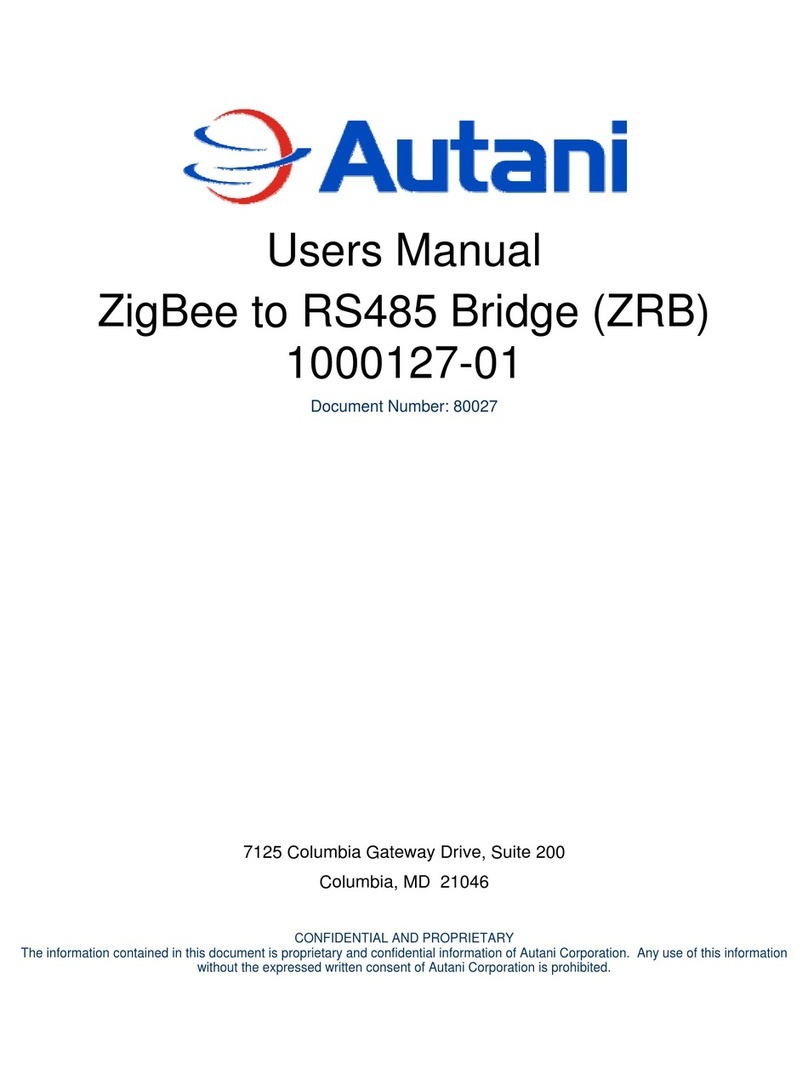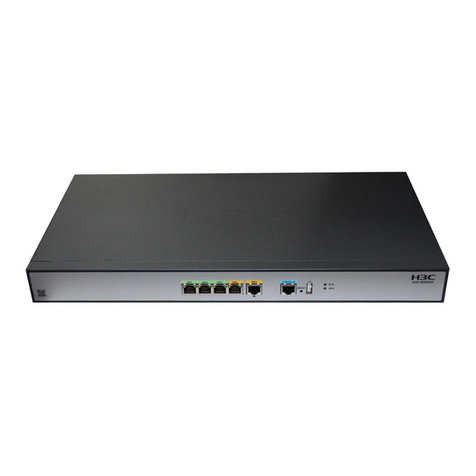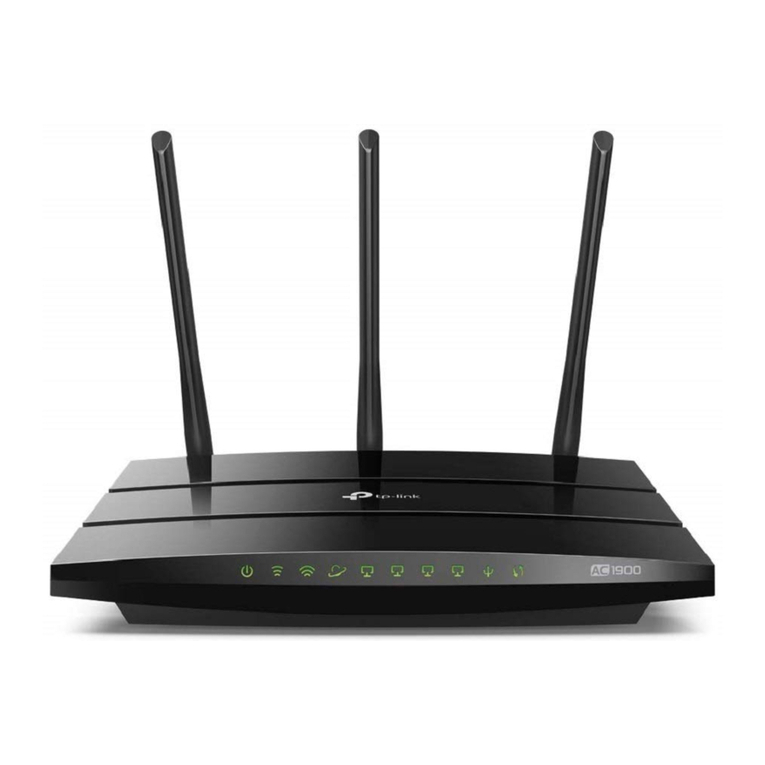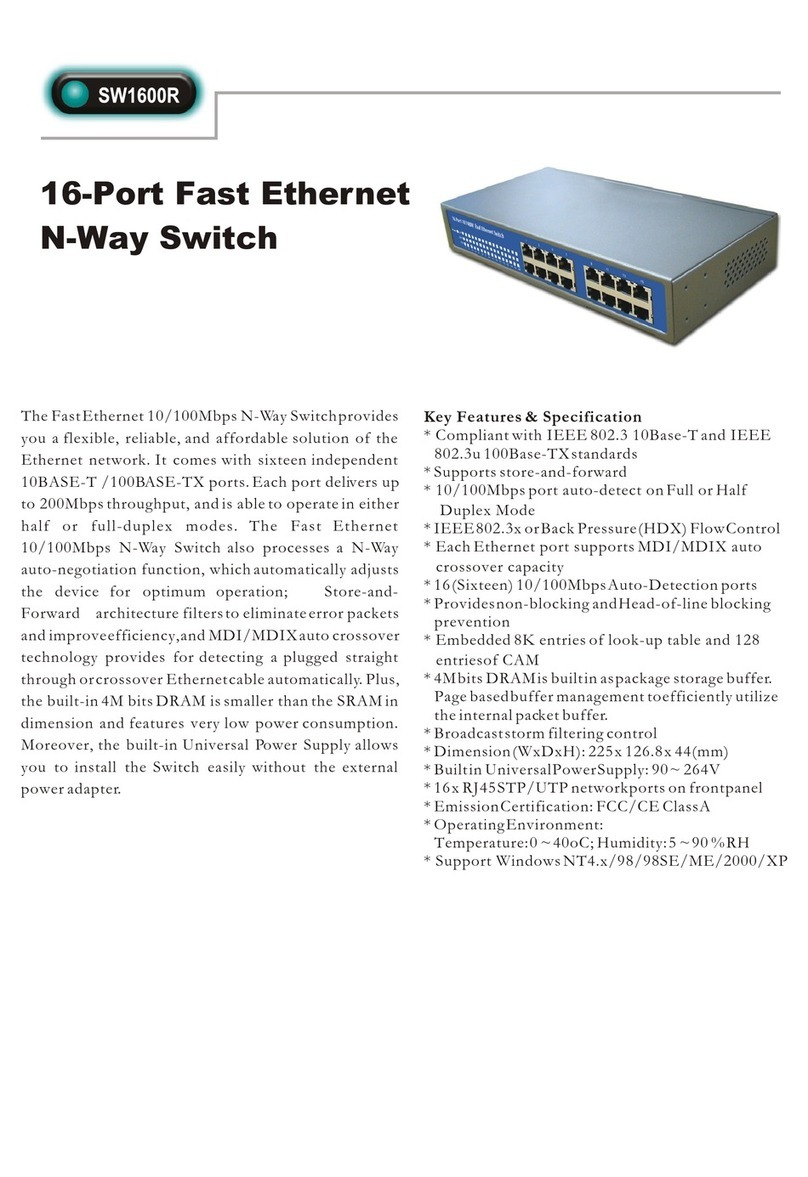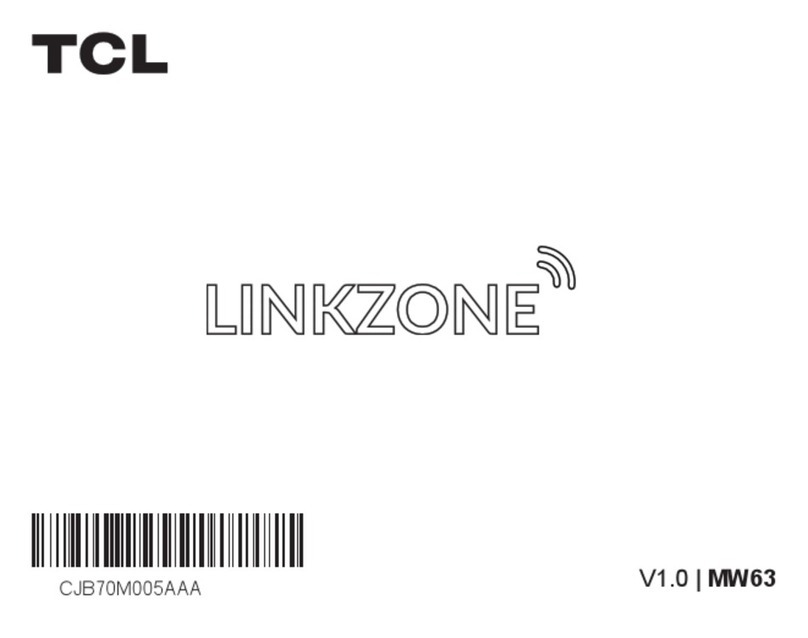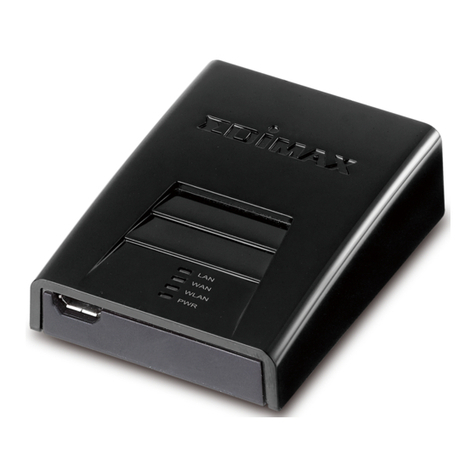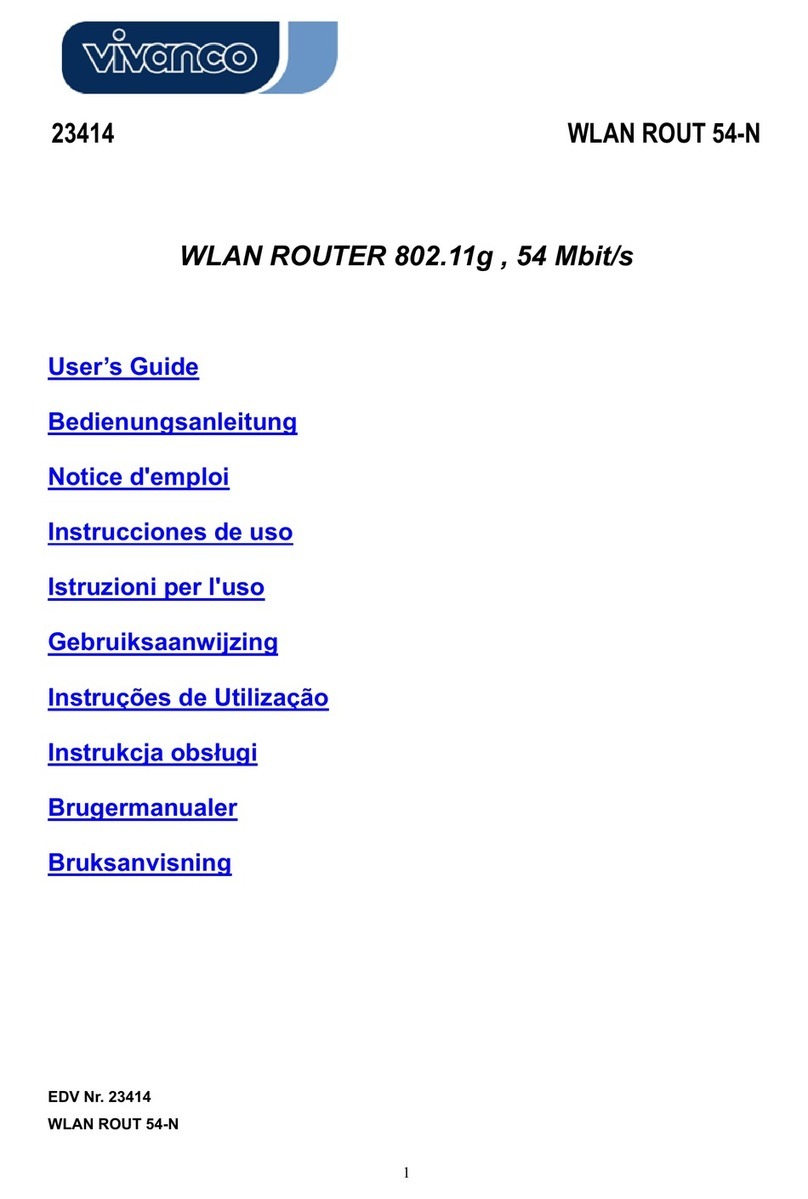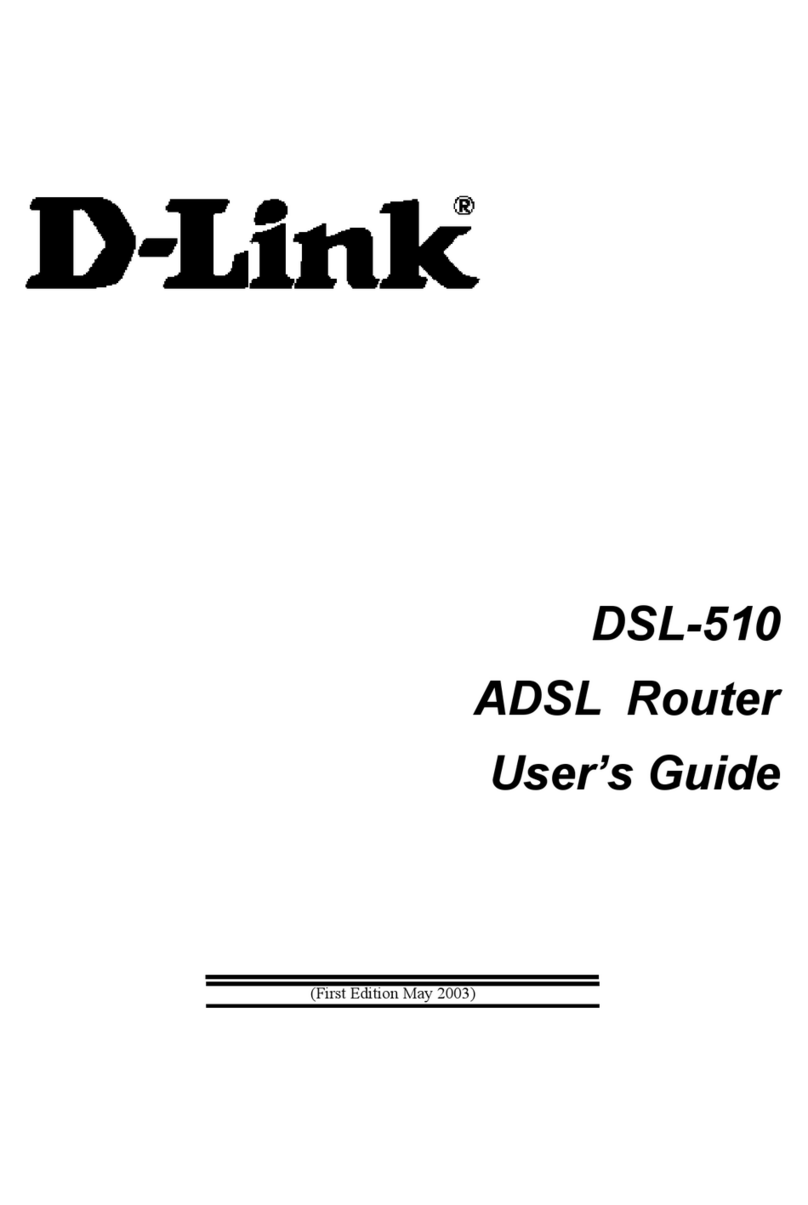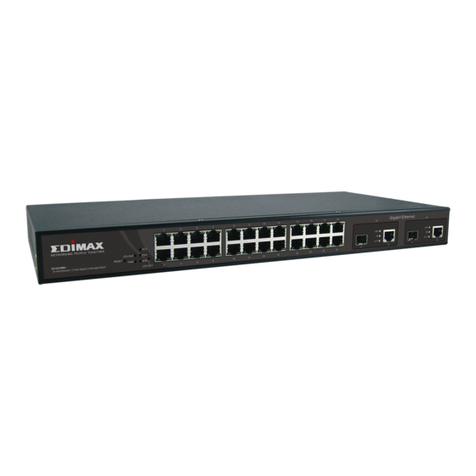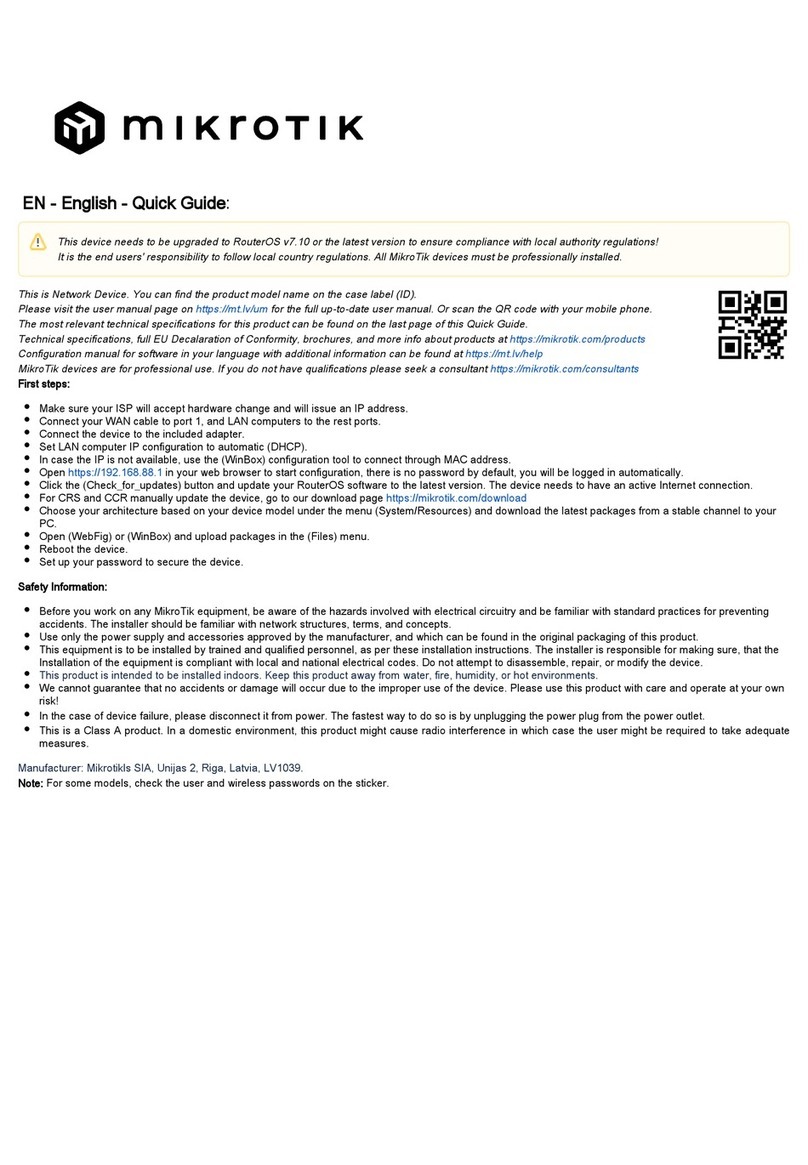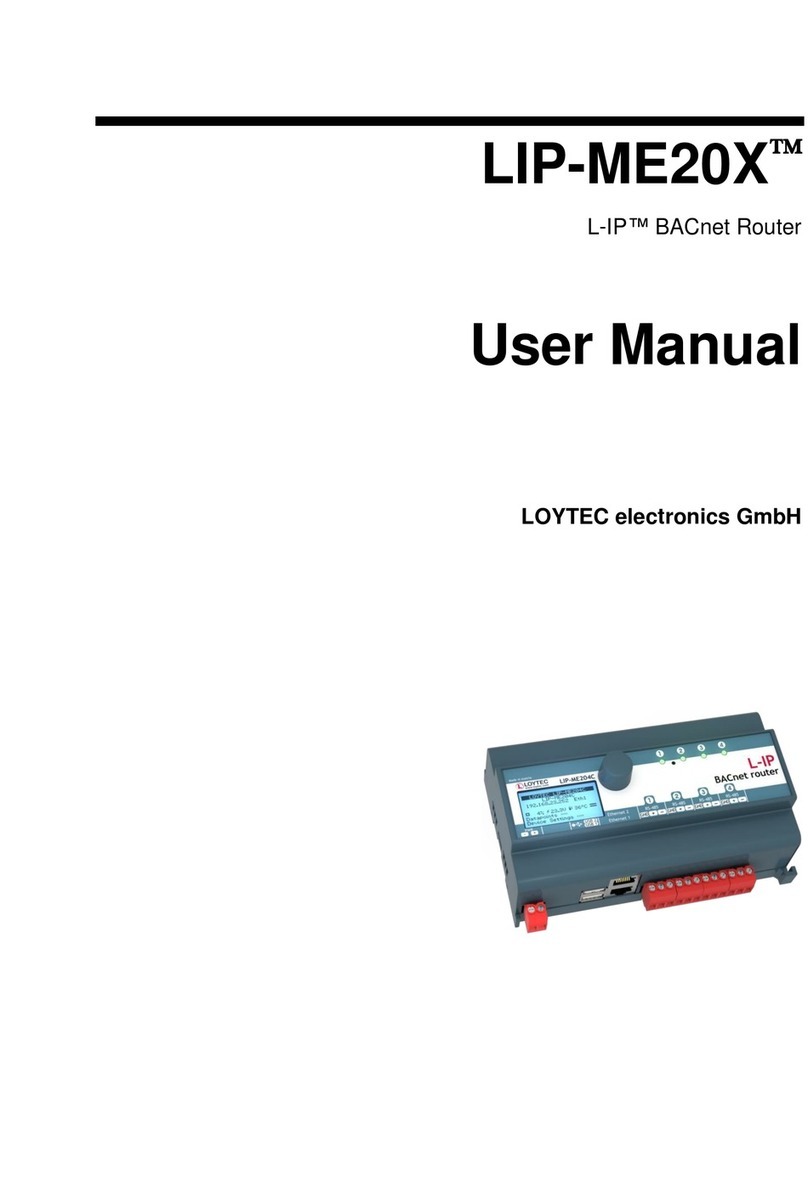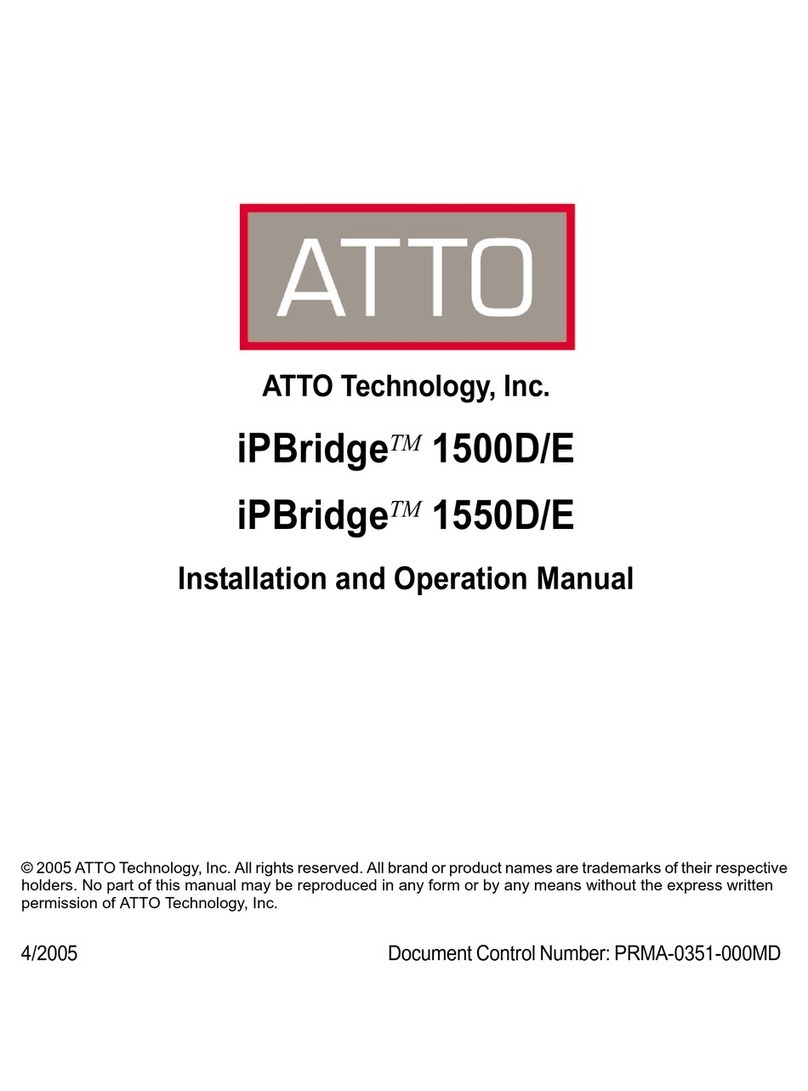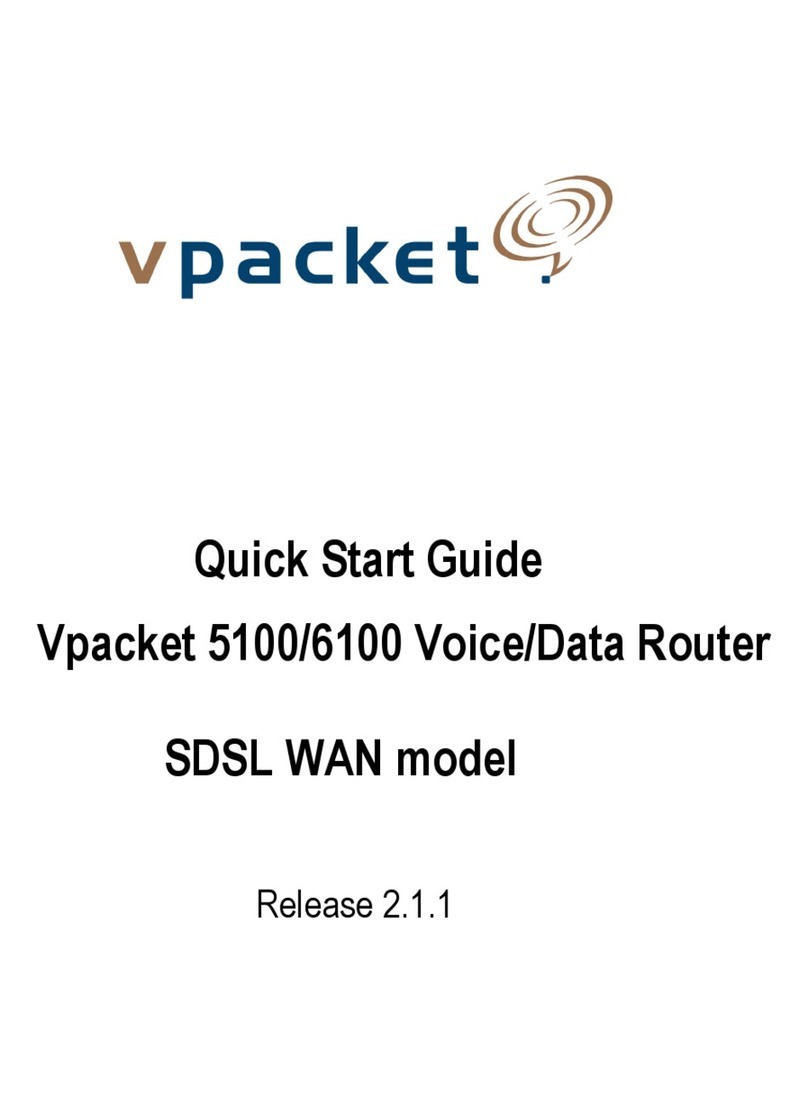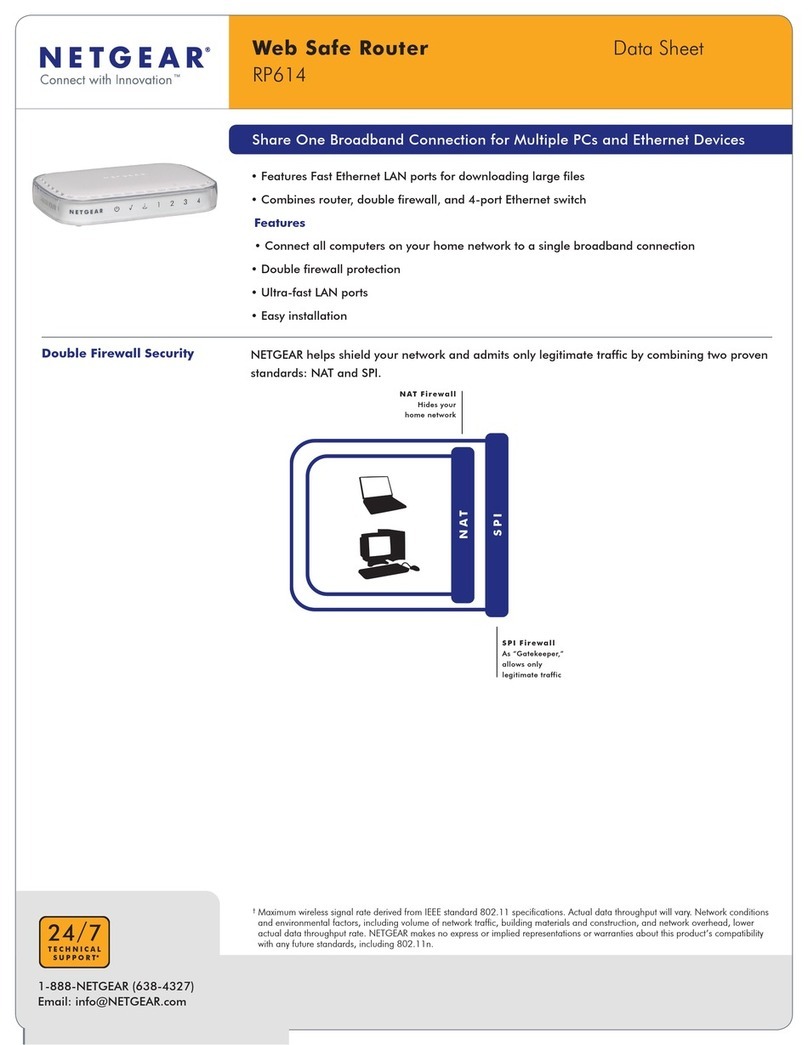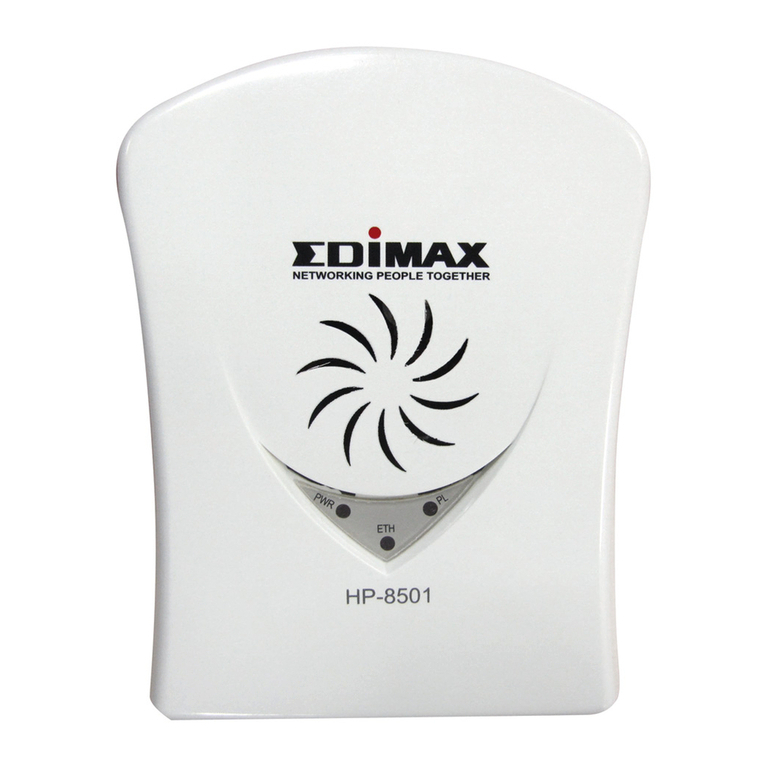CPC Router and Repeater User manual

026-1605 Rev 3 9-25-00
Router and Repeater
Installation and Operation
Manual


•
1 ROUTERS AND REPEATERS................................................................................................................................ 1-1
1.1 INTRODUCTION TO ECHELON NETWORKING ............................................................................................................. 1-1
2 HARDWARE OVERVIEW...................................................................................................................................... 2-1
2.1 THE ROUTER.............................................................................................................................................................. 2-1
2.2 THE REPEATER .......................................................................................................................................................... 2-1
3 NETWORK OVERVIEW......................................................................................................................................... 3-1
3.1 BRANCHED CONFIGURATION..................................................................................................................................... 3-1
3.1.1 How to Map a Branched Configuration............................................................................................................ 3-1
3.2 DAISY CHAIN CONFIGURATION................................................................................................................................. 3-5
3.2.1 How to Map a Daisy Chain Network................................................................................................................. 3-5
4 HARDWARE MOUNTING...................................................................................................................................... 4-1
4.1 THE ROUTER.............................................................................................................................................................. 4-1
4.2 THE REPEATER .......................................................................................................................................................... 4-1
4.2.1 External Repeater .............................................................................................................................................. 4-1
4.2.2 Internal Repeater ............................................................................................................................................... 4-2
5 WIRING...................................................................................................................................................................... 5-1
5.1 THE ROUTER.............................................................................................................................................................. 5-1
5.1.1 Placement........................................................................................................................................................... 5-1
5.1.2 The Terminals .................................................................................................................................................... 5-1
5.1.3 Wiring................................................................................................................................................................. 5-1
5.1.4 Termination........................................................................................................................................................ 5-1
5.2 THE REPEATER .......................................................................................................................................................... 5-2
5.2.1 Placement........................................................................................................................................................... 5-2
5.2.2 Wiring the Repeater ........................................................................................................................................... 5-2
6 PROGRAMMING THE EINSTEIN CONTROLLER .......................................................................................... 6-1
6.1 THE ROUTER.............................................................................................................................................................. 6-1
6.2 THE REPEATER .......................................................................................................................................................... 6-2


•
-
CPC’s Einstein controllers communicate to their asso-
ciated controlling devices (CC-100s, TD3s, etc.) and other
Einstein controllers using a unique communication and
addressing system called LonWorks, more commonly
called “the Echelon network,” named after Echelon, the
company that created LonWorks. The Echelon network
can be as small as one Einstein controller and a few Eche-
lon-compatible devices (or “nodes”) or as large as many
Einsteins, each with multiple devices.
Wiring for the Echelon network is very specific. All of
the nodes must be wired together using a method called
daisy chaining that connects all Echelon network devices
on a single unbroken loop of wire.
A daisy chain segment can only contain a total of 64
devices, or nodes. If an Echelon network must contain
more than 64 devices, as is usually the case with CC-100,
CS-100, and TD3 installations, one or more repeaters or
routers must be used to extend the capabilities of the net-
work.
Routers and repeaters are simply network devices that
aid in the flow of communication across an Echelon net-
work. They are necessary only when an Echelon network
installation exceeds one or more specifications, such as a
maximum total number of nodes or a maximum wire
length.
Repeaters are devices that receive network signals in
one end and repeat them at a higher strength through the
other end. They are sometimes needed in cases where net-
work wiring lengths are excessively high, but are also
sometimes used for convenience purposes to extend sev-
eral daisy chains from a single Einstein.
Routers are like repeaters, except they are also com-
munications filters. A router only allows messages to pass
through that are specifically addressed to devices on the
other side of the router. All other messages that aren’t
addressed to devices on the other side of the router are
blocked out, thus alleviating the amount of network traffic.
Routers are typically used in networks that have a large
amount of devices.
A network is made up of one or more segments. A
segment is defined as a single daisy chain of 64 nodes or
less that connects Einsteins, CC-100s, TD3s and other
LonWorks devices in a single unbroken chain. Figure 1-1
shows a small daisy chained segment.
A segment may contain one or moresubnets. A subnet
is a group of nodes that includes one Einstein controller
and a number of boards/controllers that are associated with
that Einstein. For example, a subnet for an Einstein RX
controller might consist of an Einstein RX and 12 CC-
100s that are associated with Case Circuit applications in
the Einstein.
Because segments have a limitation of 64 devices or
less, subnets likewise cannot consist of more than 64
devices. Thus, a single segment could be an Einstein and
63 other devices associated with the Einstein.
A node is a single device, either an Einstein, a CC-
100, an ESR8, or other LonWorks devices. Routers are
also considered nodes. A repeater is not generally consid-
ered a node, but repeaters do count towards the 64 device
limit on a segment.
You will need to use a repeater when you have a seg-
ment of 64 nodes or less whose total wire length exceeds
the maximum total wire length specification for the Eche-
lon network cable (4592 feet, or 1400 m). A repeater
allows you to split the segment into two daisy chains, each
of which can be up to 4592 feet in length.
Repeaters can also be useful in cases where it is not
convenient to wireall devices together on a single unbro-
ken daisy chain. A four-channel repeater can be used to
extend several daisy chains from an Einstein, each of
which can be as long as 4592 feet in length.
Figure 1-1 - Small Segment

W
Repeaters do NOT add to the maximum total devices
you may have. Adding a repeater only allows you to
increase the total length of wire used in your network. To
add devices above the 64-node level, you must use routers.
Routers are used in installations where the total num-
ber of nodes, including each Einstein and all peripherals
associated with the Einstein, exceed the 64-node limit. A
router allows another 64 nodes to be added to the Echelon
network.

!
•
-
An Echelon router (P/N 572-4200) is necessary for
configurations numbering more than 63 network devices
(the router also becomes a node). The router minimizes
unnecessary traffic while also boosting signal strength and
expanding the size of the network.
A router does not repeat all information it receives;
rather, it sends only those messages that are for subnets on
the other side of the router. This keeps all communication
that occurs between devices in the same subnet from clut-
tering up other channels on other subnets.
A LonWorks Router cannot be used to split a subnet.
Controllers with the same subnet address must all be
located on the same side of a router. If a system needs to
increase the length of a segment within a subnet, it should
use a repeater.
A repeater is necessary whenever an Einstein network
has a total wire run longer thanthe recommended distance.
The repeater’s function in this application is to simply
boost all signals that come across it. As a result, a total
wire run that once exceeded the normal limit for Echelon
networks is acceptable.
Physically, the two-channel repeater itself may take
either of two forms. The internal version of the repeater
(P/N 832-1000) is a device that connects directly to the
Einstein’s PC104 port and is powered by the Einstein. An
external version of the same two-channel repeater (P/N
832-1010) is also available for field installations; this ver-
sion comes in an enclosure and must be powered by its
own 24VAC transformer.
The internal repeater board is shown in Figure 2-2.
Figure 2-1 - Router Detail
Figure 2-2 - Einstein Two-Channel Repeater Board

2-2
W
Repeater and Router Installation and Networking Guide 026-1605 Rev 3 9-25-00
The four-channel repeater (P/N 832-1040) serves the
same basic function as the two-channel repeater: boosting
signal strength. However, the four-channel repeater is also
useful as a means of connecting the Einstein to its associ-
ated devices using more than one daisy chain.
With a four-channel repeater mounted in the PC-104
slot of an Einstein, you can run as many as three daisy
chain segments out into the field, each of which can be as
long as the prescribed Echelon maximum wire length. The
fourth channel of the repeater can be used to connect other
Einsteins in a separate daisy-chain, eliminating the need to
run cable from the field back to the next Einstein.
Unlike the two-channel repeater, the four-channel
repeater does not have an external model.
Figure 2-3 - Einstein Four-Channel Repeater Board

Points to Consider Networking sing Routers and Repeaters
•
3
-
1
Constructing an Echelon network using routers and
repeaters is very different than constructing a simple net-
work of less than 64 nodes. Networking with routers and
repeaters requires some planning in order to determine:
•How many routers and repeaters are necessary, and
•Where routers and repeaters should be placed.
'R , 1HHG )RXU&KDQQHO 5HSHDWHUV"
Network layout will bedifferent depending on whether
or not you are using four-channel repeaters. Therefore, it is
a good idea to decide beforehand if they will be used.
If your network contains a large number of nodes and/
or it is spread out over a large amount of distance, you will
likely make your network setup easier and cheaper if you
use four-channel repeaters in each Einstein. The ability to
extend more than one daisy chain from each Einstein gives
more freedom to run Echelon cable where it is most con-
venient, and it eliminates the need to run wire back from
the field to the Einsteins.
If your network contains only 2-3 Einsteins and
between 64-128 nodes, and the nodes are concentrated in a
relatively small area, you may beable to easily construct
your network without four-channel repeaters.
:LOO , 1HHG 7R 7HUPLQDWH 'HYLFHV ,Q 7KH )LHOG"
Any daisy-chain segment that ends at a device
mounted in the field will need to be terminated. If this
device is a TD3 or ESR8, there is no on-board means of
terminating the device, and if it is a CC-100/CS-100, the
enclosure will have to be opened to set the termination
jumpers. If you have any of these devices in your installa-
tion, you should obtain one or more Daisy ChainTermina-
tion Blocks (P/N 535-2715) to terminate daisy chains in
the field.
CPC specifies only one type of cable for use with Ein-
stein Echelon networks: Level 4 twisted pair, stranded,
shielded 22AWG cable. Contact your CPC salesman for
information on how to purchase this cable.
Further technical specifications for this cable type are
given in Table 3-1 and Table 3-2.
Cable Type Level 4, twisted pair, stranded, shielded
Wire Diam./AWG 0.65mm/22AWG
Loop Resistance 106(ohms/km)
Capacitance 49(nF/km)
Maximum Cable Length 4592 ft. (1400 m)
Table 3-1 - Echelon Network Cable Specifications
Cable Type CPC Part Number
1 pair, non-plenum 135-2300
1 pair, plenum 135-2301
Table 3-2 - Recommended Wiring

W
3.3 Networking Without Using Four-Channel Repeaters
1. Connect each Einstein controller to all of the Lon-
Works devices associated with it using a single
unbranched run of wire. This creates a series of
individual daisy chains, each of which is its own
subnet.
2. Arrange all subnets together in groups of 64 nodes
or less. If a group of 64 contains more than one sub-
net, wire all subnets in the group together into a sin-
gle daisy chain. This paves the way for placing
routers in step 3.
In the example shown in the figure, a three-Einstein
network with 22, 36, and 48 nodes each would form
two groups: one containing Einstein #1 and #2 (58
total nodes) and the other containing Einstein #3
(48 nodes). A simple length of cable between Ein-
stein #1 and Einstein #2 wires the entire group
together in a single daisy chain.

!"
•
-
3. Place routers in between Einstein subnet groups so
that each 64-node group is isolated from each other
by routers. Routers can be wired in the middle of a
daisy chain or at the start of one.
In the illustrated example, the router is placed
between Einstein #2 and Einstein #3 (making two
segments), so that the daisy chain on one side of the
router has a total of 58 nodes and the other has 48
nodes. One side of the router is placed in the middle
of the first group’s daisy chain, while the other side
of the router becomes the beginning point of Ein-
stein #3’s daisy chain.
4. For each daisy chain (i.e. each division of the net-
work separated by a router), measure the total wire
length used and make sure the distance does not
exceed 4592 ft. (1400m).
If the total wire length is exceeded, a repeater will
need to be used to divide the daisy chain. The
repeater should be placed so that the segments on
either side of it do not exceed the total wire length.
In the example diagram, the daisy chain connecting
Einstein #1 and #2 is 5000 ft. This is above the
maximum wire length of 4592 feet, so a repeater
must split the daisy chain so that it forms two daisy
chains of less than 4592 ft. It is most convenient to
place this repeater in between Einstein #1 and #2
using an internal repeater mounted in either Ein-
stein.

#
W
5. For every daisy chain in your network, each end-
point must be terminated. You may do this by either
setting termination jumpers on the devices on the
endpoints, or by wiring a Daisy Chain Termination
Block at the end(s) of the daisy chain.
Instructions for setting termination jumpers on Ech-
elon devices may be found in the Echelon Network
Device Wiring chapter of your Einstein RX or Ein-
stein BX User’s Guide.
To wire a Daisy Chain Termination Block to the
end of a daisy chain, remove the main Echelon
cable from the last device on the network and con-
nect the end to one side of the Daisy Chain Termi-
nation Block, as shown in the picture. With a
separate length of Echelon cable, connect the other
side of the terminal block to the last device on the
daisy chain. Make sure the shield wires are con-
nected to the middle terminals.

!"
•
-
3.4 Networking Using Four-Channel Repeaters
1. For each Einstein equipped with a four-channel
repeater, run a short length of wire from Channel D
to an Echelon terminal on the Einstein processor
board (as shown in the diagram).
2. Run Echelon cable from channels A and B of the
repeater to all the Echelon devices associated with
the Einstein. Each length of wire extending from a
repeater channel must connect Echelon devices
together in a daisy chain with no splitting. Leave
Channel C of the repeater open for connecting to
other Einsteins.
You may use Channel D, which you connected to
the Einstein in step 1, to connect Echelon devices.
Simply run the wire from the second set of Echelon
terminals. Note that this becomes a “split”channel
whose daisy chain actually begins at the Einstein’s
Echelon terminals (i.e. you will have to terminate
on the Einstein processor board for this daisy
chain).
3. Use Channel C to connect all four-channel repeat-
ers together in a single daisy chain.

W
4. Place routers in between Einsteins so that no more
than 64 nodes exist on either side of a router. Place
the router so that it splits the daisy-chain that con-
nects all the other four-way repeaters, as shown in
the illustration.
In the illustrated example, the router is placed
between Einstein #2 and Einstein #3 (making two
segments), so that the daisy chain on one side of the
router has a total of 58 nodes and the other has 48
nodes. The router is placed in the middle of the
daisy chain on Channel C.
5. For each daisy chain extending from each channel,
measure the total wire length used and make sure
the distance does not exceed 4592 ft. (1400m).
If the total wire length is exceeded by any single
daisy chain, a repeater will need to be used to
divide that daisy chain. The repeater should be
placed so that the segments on either side of it do
not exceed the total wire length.
Because you are already using four-channel repeat-
ers, there will be very few instances where place-
ment of an extra repeater will be necessary. The
most likely case would be a single wire run off a
repeater exceeding the maximum length. In this
case, you must use an external repeater to split the
daisy chain in the field.

!"
•
-
$
6. For every daisy chain in your network, each end-
point must be terminated. You may do this by either
setting termination jumpers on the devices on the
endpoints, or by wiring a Daisy Chain Termination
Block at the end(s) of the daisy chain.
With all the daisy chains in a four-channel repeater
installation, termination can becomplex. The best
way to approach the task is to examine each
repeater channel by channel,and look at where each
daisy chain extending from that channel begins and
ends.
Instructions for setting termination jumpers on Ech-
elon devices may be found in the Echelon Network
Device Wiring chapter of your Einstein RX or Ein-
stein BX User’s Guide.
To wire a Daisy Chain Termination Block to the
end of a daisy chain, remove the main Echelon
cable from the last device on the network and con-
nect the end to one side of the Daisy Chain Termi-
nation Block, as shown in the picture. With a
separate length of Echelon cable, connect the other
side of the terminal block to the last device on the
daisy chain. Make sure the shield wires are con-
nected to the middle terminals.


% & '
•
#
-
4.1 The Router
The router (P/N 572-4200) must be placed in one of
the two correct positions pictured in Figure 4-1
.
As shown in Figure 4-2 the base plate is to be installed
in an electrical box either vertically (base plate interior
arrows pointing up) or rotated clockwise 90°(base plate
interior arrows pointing to the right). These two orienta-
tions provide optimal viewing of the front panel legends of
an installed router module, and also accommodate differ-
ent methods of installing electrical boxes.
When the wiring and installation of the router base
plate are complete, the router module may be installed.
The router module is installed by aligning the unit to the
base plate and gently pushing themodule onto the base
plate. It is not necessary to power down the system to
install the router module; it can be plugged in while the
system is running.
4.2 The Repeater
The external repeater (832-1010) is externally
mounted within its own enclosure. The internal repeater
(P/N 832-1000) is mounted inside of the Einstein control-
ler panel.
For external repeaters, the mounting bracket at the bot-
tom of the enclosure has two 0.156”bolt holes on either
side. Use the bolt holes to mount these repeaters in the
field as necessary (see Figure 4-3).
When mounting external repeaters, keep in mind that
they require a 24VAC Class 2 power source in order to
operate. This will likely require a transformer such as P/N
640-0041 (110V) or P/N 640-0042 (220V) to be mounted
near the external repeater enclosure. Make sure there will
be enough space next to the repeater to mount the trans-
former.
Figure 4-1 - Router Base Plate Orientation
Figure 4-2 - Router Mounting
Figure 4-3 - External Repeater Mounting

W
4.2.2 Internal Repeater and Four-
Channel Repeater
The internal repeater and four-channel repeater boards
mount in the PC-104 slot located at the very bottom of the
Einstein controller’s main circuit board. See Figure 4-4.
Figure 4-4 Mounting the Internal Repeater

!
•
-
The router is designed to be placed in between Einstein
controllers, typically in the motor room. Figure 5-1 shows
how therouter is wiredon the Echelon network as a bridge
between an Einstein on one segment and an Einstein on
the other segment.
A router can NOT be placed between an Einstein and
any device that will be associated with the Einstein. In
other words, all devices that are in the same subnet cannot
be separated from each other by a router.
The router has two sets of terminals on the back of its
base plate. Table 5-1 identifies the terminals and their
function.
To hook up a router:
1. Cut, strip, and connect the three-conductor wires
from Segment 1 to the INCOMING wiring termi-
nals on side A. The two signal wires should be
connected to terminals 1 and 2.
2. If the router is not the endpoint of the daisy chain
on Segment 1, continue wiring the segment from
side A by connecting the outgoing segment wire
to the OUTGOING terminals 3 and 4.
3. Connect the bare shield wires on both the
INCOMING and OUTGOING segment wires to
terminal 5 (the ground terminal).
4. Repeat steps 1 through 3 for Segment 2 on the
outgoing side (side B). Connect the INCOMING
signal wires to terminals 17 and 18, the OUT-
GOING signal wires toterminals 15 and 16, and
the shield wire to terminal 14.
5. If the physical location of the router is in close
proximity to an Einstein controller, connect a
three-conductor wire in parallel to the Einstein’s
transformer andconnect to the router’s terminals
6 and 7. The power inputs are polarity insensitive
and the middle or ground lead should be con-
nected to terminal 5.
A writing space has been included near the wiring ter-
minals for easy field reference while wiring the system.
Use a permanent marker.
Screw
Terminals Wiring Connections
1 and 2 Incoming network wiring, polarity-insensitive
- CHANNEL A
3 and 4 Outgoing network wiring, polarity-insensitive
- CHANNEL A
5 and 14 Cable Shields - terminals 5 and 14 are inter-
nally connected.
6 and 7 Incoming power wiring, 24VAC, 2.0VA,
polarity-insensitive. Can be poweredoff the
Einstein 50VA transformer
10 and 12 Unused - Jumpered together internally-may be
used to land extra wires
11 and 13 Unused - Jumpered together internally-may be
used to land extra wires
15 and 16 Incoming network wiring, polarity-insensitive
- CHANNEL B
17 and 18 Outgoing network wiring, polarity-insensitive
- CHANNEL B
Table 5-1 - Router Wiring Terminations
Figure 5-1 - Router Detail Wiring

W
5.1.4 Termination
The router will need to be terminated only if it is an
endpoint of a daisy-chain segment. If the router is not at an
endpoint (i.e. both the INCOMING and OUTGOING ter-
minals on one side of the router both have devices con-
nected to them), you do not need to terminate at the router.
The router does not have on-board termination jump-
ers to use for termination. Therefore, the router will have
to be terminated using Daisy Chain Termination Blocks
(P/N 535-2715). To terminate a segment, wire the end of
the segment wire to the screw terminals on one end of the
termination block. Using a short length of Echelon cable,
connect the INCOMING router terminals (terminals 1
and 2 on side A, terminals 17 and 18 on side B) to the
termination block. Connect the shield wire from the center
terminal of the Daisy Chain Termination Block totermi-
nal 5. See Figure 5-2.
Wire this repeater using appropriate NEC wiring meth-
ods. Use CL2P type wiring.
If the repeater is placed in between nodes in the system
(see Figure 5-3), the wiring hook up is as follows:
1. Locate the Echelon terminals on the repeater (see
Figure 5-3). Note that there are two pairs of ter-
minals; top and bottom.
2. Connect the incoming three conductor wire to
either one of the top jacks and the outgoing wire
to one of the bottom jacks. Follow the diagram in
Figure 5-3.
3. If the segment from where the incoming wire is
to be terminated, terminate the jumpers associ-
ated with the top pair of jacks (J7, J8 jumped in
the up position), and likewise, if the segment fol-
lowing the repeater is to be terminated, terminate
those jumpers (J1 and J4).
4. External repeaters require a UL Class 2, 24VAC,
minimum 0.1 Amp transformer (P/N 640-0041,
110V and 640-0042, 220V). Connect the wiring
Figure 5-2 - Router Termination Using Daisy-Chain Termination Blocks
Figure 5-3 - Repeater Hookup
Table of contents
